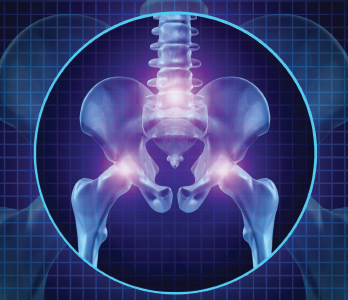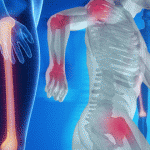
Lightspring / shutterstock.com
CHICAGO—Two experts presented insights on the diagnosis and treatment of low back and hip pain, including a refresher course on the mechanical structures involved, in Anatomy in a Day: Demystifying Low Back Pain and Lateral Hip Pain: New Patho-Anatomical Perspectives, a session at the 2018 ACR/ARHP Annual Meeting.
Low Back Pain
Avoid using such terms as non-specific low back pain, mechanical low back pain or idiopathic low back pain, said Jean H. Gillies, MD, clinical instructor of rheumatology at the University of British Columbia, Vancouver, Canada. Rheumatologists must identify specific causes of low back pain and offer their patients more effective therapies than just self-management.
Low back pain occurs in the region of the posterior trunk between the 12th rib and the gluteal folds. Hip pain may be located in the buttocks, the greater trochanteric region, groin or anterior, anterolateral or anteromedial thigh, according to Dr. Gillies.
“Why should rheumatologists be interested in low back pain?” Dr. Gillies asked. “Because low back pain has become a major global challenge, and the No. 1 cause of disability worldwide,” and was the subject of a major report in 2018 that included a call for action on better treatments for low back pain.1,2 According to the report, only a small fraction of patients with low back pain have a well-understood pathological cause, such as a vertebral fracture, so most cases are given the catch-all “non-specific” label.
“We’ve had no major advances in the diagnosis and treatment of low back pain over the past 50 years,” said Dr. Gillies. Most recommendations involve patient self-management with exercise or psychological support, which are ineffective.
The causes of back pain may fall into three clinical subsets: referred pain, lumbar spine disorders and radicular pain, said Dr. Gillies.3 Rheumatologists first screen patients with low back pain for red flags, including fracture, malignancy or spondyloarthropathies, which account for a small percentage of cases.4
In an Australian study of 1,172 low back pain patients, less than 1% had a specific, identified cause for their pain, and this gap is unacceptable, Dr. Gillies said.5
In her rheumatology practice, Dr. Gillies treats professional and Olympic athletes in many sports—as well as active weekend warriors—for back pain, but “if I followed the current international treatment guidelines, they wouldn’t help me at all, and it would mean [patients] don’t return to their sport,” she said.
Current guidelines include recommendations for low back pain ranging from heat to acupuncture to mindfulness-based stress reduction.6

